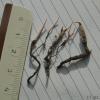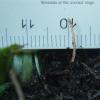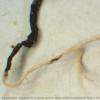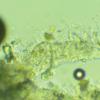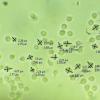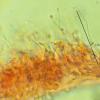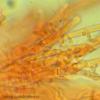
20-12-2025 23:08
Patrice TANCHAUDBonsoir, récolte sur sol sablonneux dans l'arri�

21-12-2025 09:32
Hello.A tiny ascomycete found embedded in wood in

20-12-2025 15:47
Mirek GrycHi.These grew on pine wood that was heavily covere

18-12-2025 21:17
Pol DebaenstThe identification took me to Byssonectria deformi

15-12-2025 07:09
 Danny Newman
Danny Newman
indet. Rutstroemiaceae sp. on unk. fallen leavesMc

19-12-2025 10:10
Patrice TANCHAUDBonjour, récolte réalisée en milieu dunaire, a

18-12-2025 17:23
 Bruno Coué
Bruno Coué
Bonjour,je serais heureux d'avoir votre avis sur c
Xylaria guepinii\ friesii?
Przemyslaw Drzewiecki,
22-03-2020 22:03
https://www.bio-forum.pl/messages/33/1102700.html
Jacques Fournier,
25-03-2020 18:02

Re : Xylaria guepinii\ friesii?
Hello,
I was hoping that Thomas would answer because he revised the type specimen of X. guepini and created X. friesii.
In the meantime, based on your data and Laessoe's 1993 paper, I think your collection fits well X. guepini in all respects.
It is a poorly known species, rarely collected at sexual state, thus you collection is of great interest.
Thanks for sharing it.
Cheers,
Jacques
Thomas Læssøe,
26-03-2020 10:19
Re : Xylaria guepinii\ friesii?
Just back from Cuba (birding) to a closed university etc. I would agree with Jacques that X. guepinii is the best match (super material), but I have not studied this complex for decennia so feel a bit rusty. It is still a possibility that both scotica and my own friesii should be lumped with guepinii.
bw
Thomas
bw
Thomas
Przemyslaw Drzewiecki,
26-03-2020 13:47
Re : Xylaria guepinii\ friesii?
I would like to thank both excellent interlocutors for their contributions. I am very happy.
Have a nice day - Przemek
Have a nice day - Przemek
Przemyslaw Drzewiecki,
17-12-2023 21:59
Re : Xylaria guepinii\ friesii?
Hallo all,
I read a new article about this species: Hsieh H-M, Ju Y-M, Lechat C, Fournier J, Huart D. New ecological, morphological, cultural and molecular phylogenetic insights into Xylaria guepini (Xylariaceae) Ascomycete.org. 2022;14:177–184.
I very much regret that the authors lacked scientific inquisitiveness and did not ask me for part of my collection for comparative analysis. :-( Especially since, when comparing the morphology of both collections, due to significant differences, especially (though not only) in the aspect of conidiogeny, it should be assumed that they are different species of the Xylaria genus.
I am fully willing to cooperate in further research on this species (unfortunately I do not have the ability to conduct genetic research myself),
best regards, Przemek
I read a new article about this species: Hsieh H-M, Ju Y-M, Lechat C, Fournier J, Huart D. New ecological, morphological, cultural and molecular phylogenetic insights into Xylaria guepini (Xylariaceae) Ascomycete.org. 2022;14:177–184.
I very much regret that the authors lacked scientific inquisitiveness and did not ask me for part of my collection for comparative analysis. :-( Especially since, when comparing the morphology of both collections, due to significant differences, especially (though not only) in the aspect of conidiogeny, it should be assumed that they are different species of the Xylaria genus.
I am fully willing to cooperate in further research on this species (unfortunately I do not have the ability to conduct genetic research myself),
best regards, Przemek

